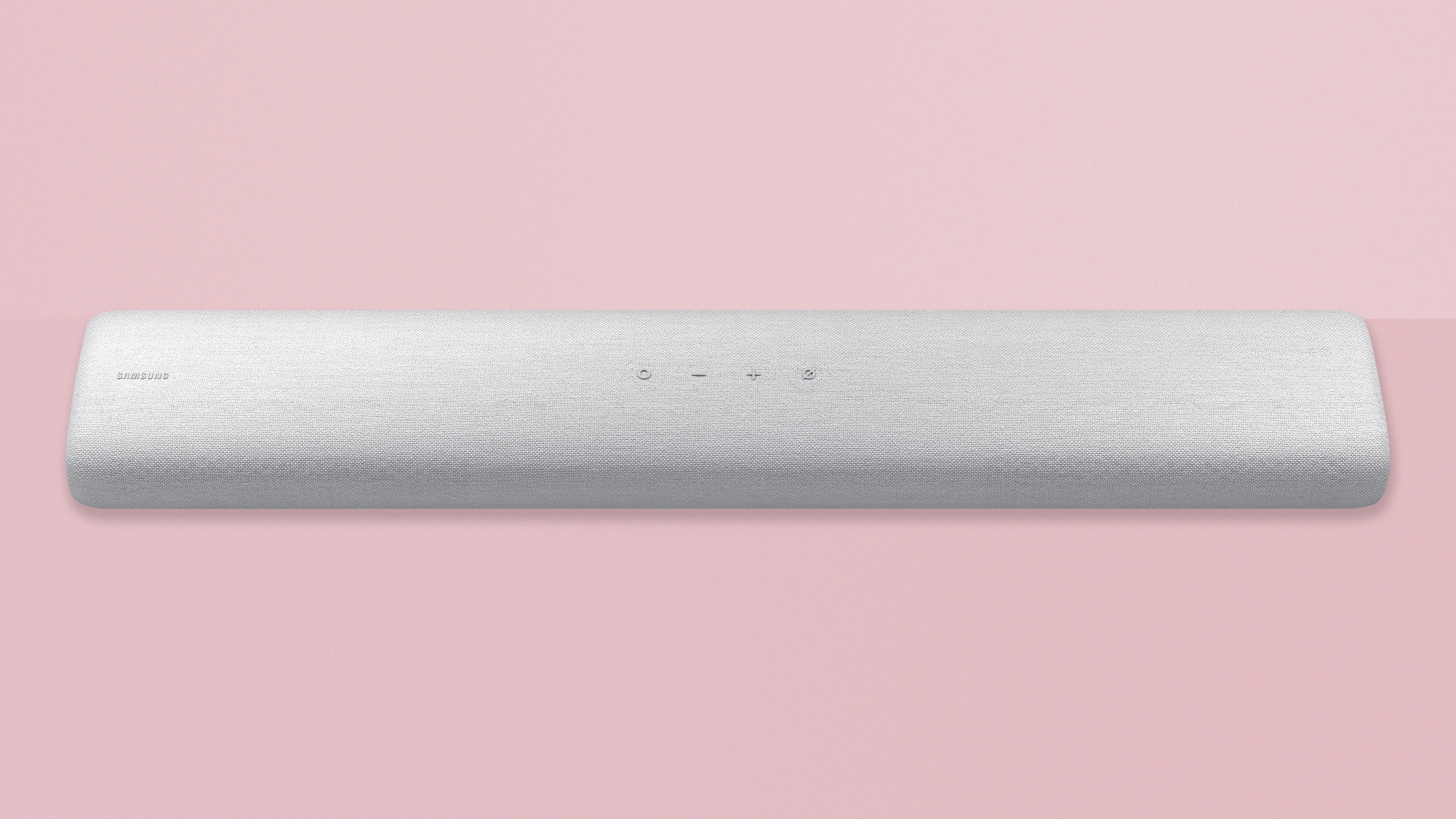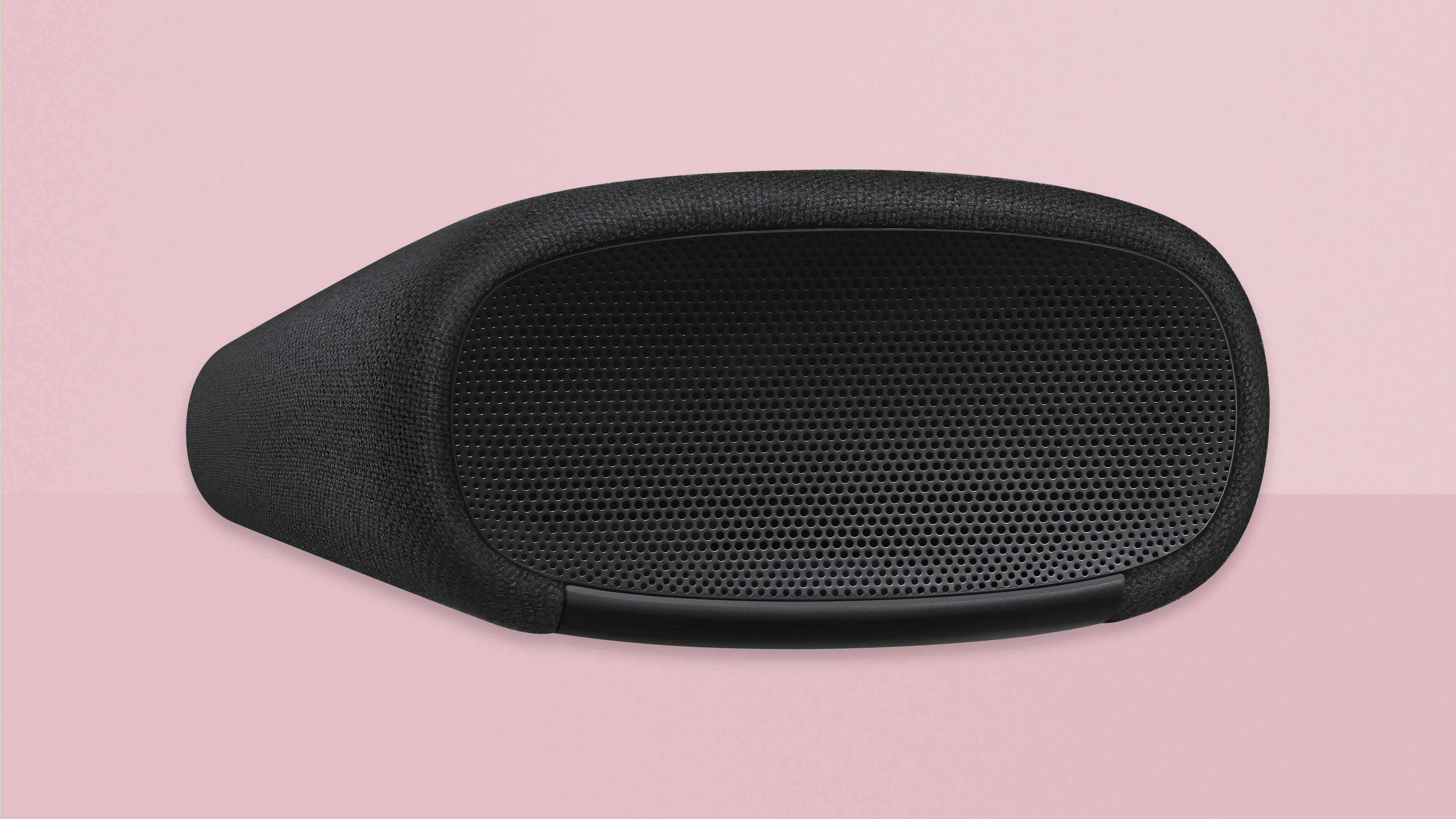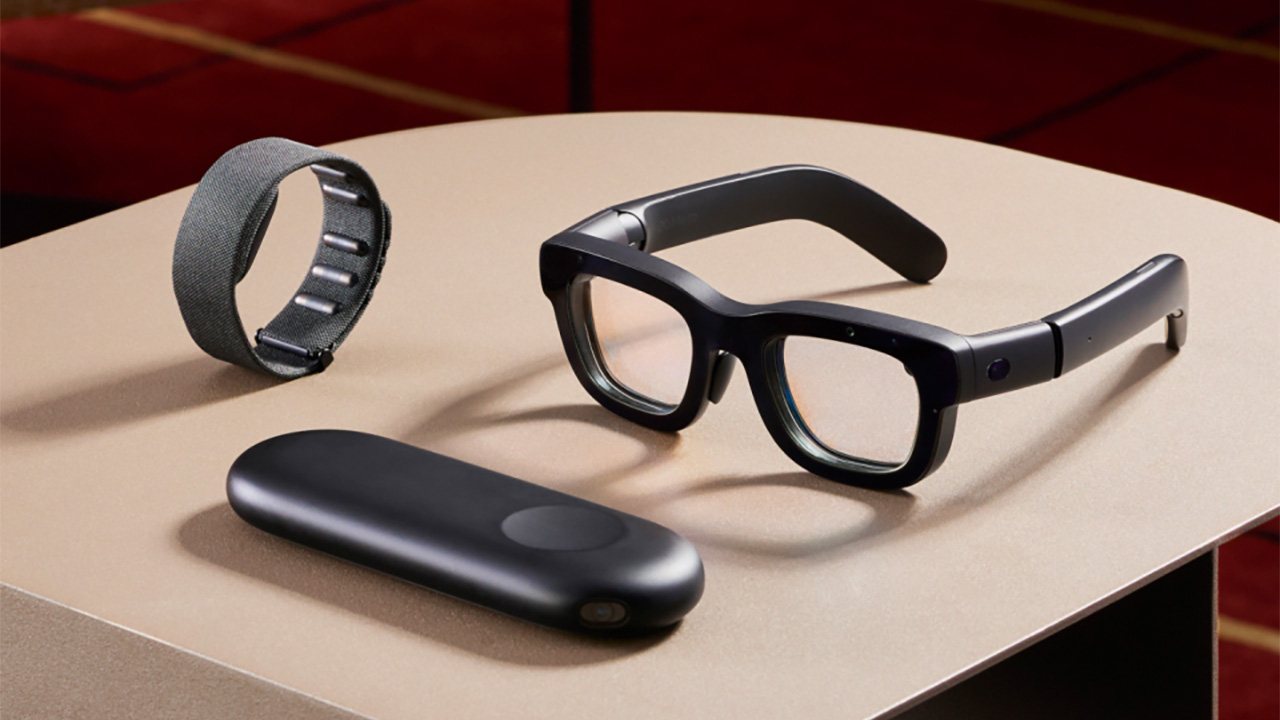Samsung HW-S60T review: an affordable soundbar with a premium feel
The Samsung HW-S60T is an affordable soundbar with a clear and expansive sound but lacks low-frequency bite

The Samsung HW-S60T is an expansive, confident and decorative upgrade on your TV sound if you can live without the movie-friendly low-frequency shock and awe.
-
+
Neat and tidy looks
-
+
Clear, distinct and expansive sound
-
+
Good control options
-
-
Limited connectivity
-
-
Lacks low-end presence
-
-
Some outstanding rivals
Why you can trust T3

For this Samsung HW-S60T review, it'll be worth saying straight off the bat that Samsung has been consistently pushing out state-of-the-art soundbars recently, making them a regular in our list of the best soundbars.
This means significantly sized products, at significant prices, packing a lot of significant technology – most notably Dolby Atmos compatibility. Have a look at our Samsung HW-Q90R review to see what we mean.
But Samsung has not forgotten those customers who want a simpler, cheaper soundbar, those who just want to improve their TV sound without breaking the bank, who don't have space or patience for a giant piece of kit. Customers who are almost certainly strongly considering buying a Sonos Beam, in other words. Which brings us to this, the Samsung HW-S60T.
- See the best TVs of all kinds
- Or just the best OLED TVs
- Or the best gaming TVs – ready for PS5 pre-orders

Samsung HW-S60T review: Price & features
At £399 / $329, the HW-S60T goes up directly against the Sonos Beam, which ranks highly among the very best £400-ish soundbars around. Sonos is far from the only company ready to part you from this sort of money for a reasonably compact, discreet and nicely finished soundbar, but if Samsung is serious it’s the Sonos it needs to have in its sights.
The HW-S60T, at 760x70x130mm, is tidily proportioned and will fit neatly underneath any TV from 40 inches upwards. It’s almost entirely covered in Kvadrat acoustically-transparent cloth (which seems to be compulsory in the audio world just now), and is available in black or silvery-grey. For some unaccountable reason, the grey version has a different model number (HW-S61T).
It’s important to be careful when positioning the Samsung, though, because it features side-firing as well as forward-facing drivers. The intention, of course, is to bring proper width to the sonic presentation, and that won’t happen if the S60 is boxed in at either end – don't put it inside your TV stand.
The Samsung is described as a 4.0-channel soundbar, and has a total of six drivers powered by a total of 180 watts. A couple of passive radiators offer a touch of low-frequency reinforcement.
There’s an attempt to offer some additional height to the S60 sound, with what Samsung refers to as ‘acoustic beam’ technology. This is basically an attempt to make the side-firing drivers do double duty. As well as firing outwards at an angle, some of the driver activity is channelled upwards too. So not only must you keep the ends of the soundbar free from obstruction, it’s best not to put it under a surface either.
In a recess at the back of the S60T is a brief suite of connectivity. There’s an HDMI ARC socket (not eARC, you’ll notice), a digital optical input, a socket for power and a small ‘service’ port. There’s Wi-Fi and Bluetooth connectivity available too, though no Ethernet socket – and Bluetooth isn't aptX or anything like that.
Wireless connectivity extends as far as compatibility with Samsung’s dedicated wireless SWA-W500 subwoofer and/or SWA-8500S wireless rear speakers. So there are future options if you feel you’ve outgrown the ‘single soundbar’ approach.

Samsung HW-S60T review: Sound quality
First things first: unless you paid top dollar for a TV with a dedicated integrated soundbar (an expensive Panasonic or Philips, in other words), the Samsung HW-S60T sounds far bigger, bolder and better than your television does.
That’s hardly the be-all and end-all, though – any number of soundbars costing half as much as this Samsung can wipe the floor with your average TV’s audio performance. But the S60T goes quite a bit further towards justifying its price.
In the most straightforward terms, the Samsung has sufficient presence to comfortably fill an average-size TV room with sound. The side-firing drivers do an impressive job of spreading sound far beyond the physical confines of the soundbar itself, and while the ‘acoustic beam’ arrangement is no substitute for upward-firing drivers it does at least bring a hint of height to the presentation.
Despite the size of the soundstage the S60T generates, though, it has no problem remaining focused and well integrated. It’s easy to locate specific sounds or effects, and there’s sufficient coherence to the Samsung’s presentation for soundtracks to sound unified even though they spread out expansively.
Tonally, the news is equally good in almost every respect. At the top of the frequency range there’s adequate bite and attack, bit the S60T snapping into treble sounds without getting edgy about it. The midrange is spacious and well defined, and – after a little judicious fiddling with the EQs in the ‘Smart Things’ app – projects dialogue sufficiently for even hazy soundtracks to remain clear and simple to follow.
The more testing a soundtrack gets, though (and by that we mean the more complex the mix and numerous the effects) the more the Samsung sounds just a little lightweight. Again, when compared to the sound of your TV, the S60T sounds as bassy as a nightclub rig, but when compared to the best of its rivals – especially those that comes with a wireless subwoofer – there’s a distinct shortage of low-end punch and drive. The lowest frequencies are there, but they’re tentative, and as a consequence, a crash-bang-wallop Hollywood soundtrack misses out a fair bit of the ‘wallop’.
When the S60T is used as a wireless speaker for music, the story is much the same. There’s good separation and focus, a proper impression of a soundstage, and plenty of midrange clarity, but not quite the low-frequency presence that contributes to a complete sonic picture.

Samsung HW-S60T review: Design & usability
There’s really very little to take issue with here in terms of design, because the HW-S60T is entirely anonymous (if you’re not keen) or discreet (if you are). The Kvadrat wrap is, predictably, flawless, and at the perforated end-caps in front of the horn-loaded side-firing drivers are beautifully fitted. There’s an ‘of a piece’ solidity about the Samsung that lets you know it was assembled with a bit of care.
As far as control goes, you’ve a number of options. There’s a banana-shaped remote control that features just enough buttons and is made of spectacularly thin plastic. Or Samsung’s ‘Smart Things’ app is available too – it’s stable, extensive and gives access to quite a few EQ settings, as well as some audio presets including ‘standard’, ‘music’ and ‘adaptive sound’. The first two really ought to be self-explanatory, while ‘adaptive sound’ monitors the sort of content you’re watching and adjusts its EQ accordingly. This is useful when you bear in mind the Samsung has no ‘centre’ channel as such, and consequently could sometimes use a bit of a boost in the midrange, which it gives itself
Amazon Alexa voice control is available too (Samsung seems to have quietly consigned its Bixby voice assistant to the bin marked ‘3D TV and other failures’) – in this instance Alexa seems to do nothing but yell, though, which is off-putting. There are also a few physical controls on top of the bar, along with a sequence of LEDs that light up in different colours depending on what instruction the S60T is undertaking. So that’s another random selection of colours and lights to be committed to memory.
Samsung HW-S60T review: Verdict
If you’ve this sort of money to spend on a soundbar, you’re not short of choice. But if you want a nicely designed, impeccably finished soundbar with numerous control options at this sort of money, your scope narrows more than somewhat.
Ultimately, the HW-S60T isn’t as punchy as it might be, and as a result its sonic signature is a little skewed away from the bass end – but it gets far more right than it gets wrong. And some people will be happy without that low-end thump or the extra space a subwoofer takes up, so this will suit them perfectly.
Samsung HW-S60T review: Also consider
We already mentioned the Sonos Beam, which is the big competitor here. It has five drivers (four woofers and a central tweeter), and three passive radiators for bass. Like the Samsung, it can't hit the deep notes that a real subwoofer can, but it does a solid job of trying, and similarly presents a broad soundstage, with angled woofers creating real width. It's also a full Sonos multi-room wireless speaker, and has Apple AirPlay 2 support (but no Bluetooth). Oh, and it has Amazon Alexa and Google Assistant built in, so it's also a smart speaker.
If you want something with more punch and extra cinematic pretensions, we'd point you towards the Sony HT-G700. This is a soundbar and wireless subwoofer combo, and while the soundbar portion is wider than the Samsung (at 980mm long), it's still pretty compact for a Dolby Atmos soundbar. Yes, this is designed with surround sound mind, using processing to create a virtual 'dome' of sound. It can't actually mimic real Atmos surround sound, but it comes remarkably close at times. But mostly, it adds even more width and height, tracking with the action on-screen impressively… and the subwoofer adds that extra rich punch for action.
- The best 32-inch TVs – perfect for bedrooms and offices
- The best 43-inch TVs – great entry-level 4K sets
- The best 48- to 50-inch TVs – beautiful mid-size 4K TV sets
- The best 55-inch TVs – premium TVs that still fit most living rooms
- The best 65-inch TVs – beautiful big-screen TVs
- The best 75-inch TVs – giant 4K and 8K TVs packed with features
Sign up to the T3 newsletter for smarter living straight to your inbox
Get all the latest news, reviews, deals and buying guides on gorgeous tech, home and active products from the T3 experts
Simon Lucas is a freelance technology journalist and consultant, with particular emphasis on the audio/video aspects of home entertainment. Before embracing the carefree life of the freelancer, he was editor of What Hi-Fi? magazine and website – since then, he's written for titles such as Wired, Metro, the Guardian and Stuff, among many others. Should he find himself with a spare moment, Simon likes nothing more than publishing and then quickly deleting tweets about the state of the nation (in general), the state of Aston Villa (in particular) and the state of his partner's cat.
-
 This is the sound of BMW's upcoming Neue Klasse EVs
This is the sound of BMW's upcoming Neue Klasse EVsHas BMW cracked the problem of making EVs sound fun with its next-gen soundscape for its Neue Klasse cars
By Alistair Charlton Published
-
 Build unshakeable core strength with a kettlebell and these three exercises
Build unshakeable core strength with a kettlebell and these three exercisesAdd this to the end of your workout to fire up your midsection muscles
By Bryony Firth-Bernard Published
-
 The next big tech battlefield is AR Glasses – and Apple is ready to fight
The next big tech battlefield is AR Glasses – and Apple is ready to fightTim Cook is said to "care about nothing else"
By Sam Cross Published